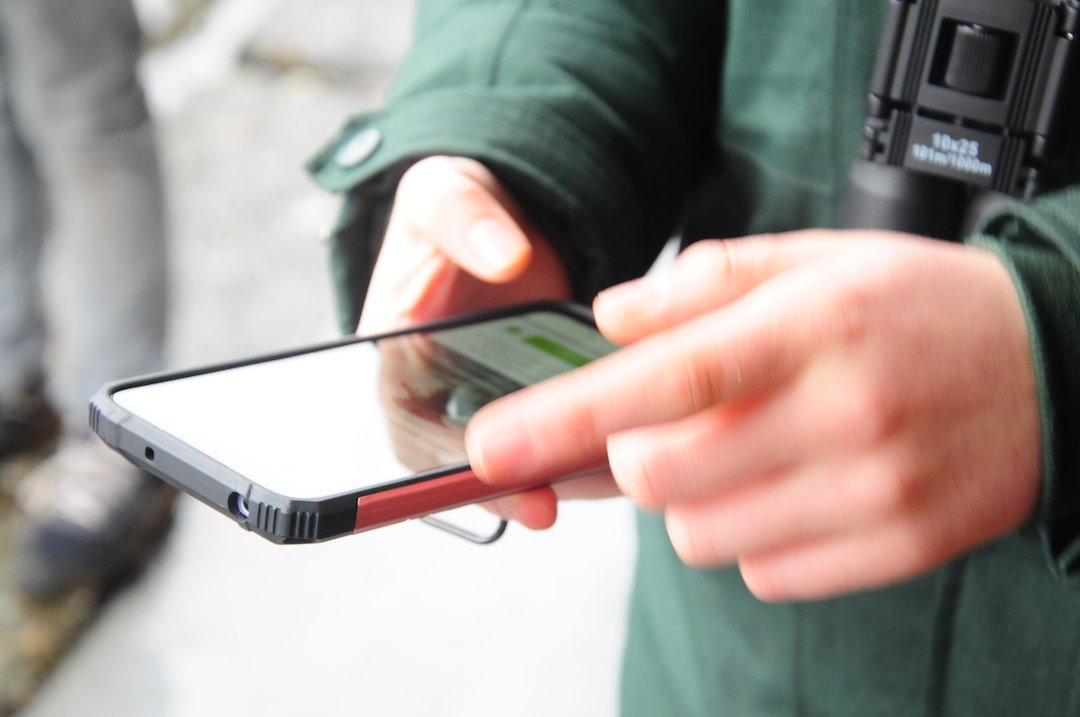What is Citizen Science?
Many believe that citizen science first began in the 1980’s at Cornell’s Laboratory of Ornithology, when nature lovers began observing and collecting data about a diverse array of species. Today, environmental activism has increased interest in the practice. In its essence, “citizen science” is a term that refers to activities that encourage the active contributions of ordinary citizens toward science and conservation as a result of their own curiosity and interest in the environment.
Guillermo demonstrating how to use a citizen science application
Participation in citizen science encourages people of all ages to expand their interest in learning about and contributing to the collective knowledge of Nature in any setting. Rural or urban - anyone can participate from wherever they are!
Checking for birds to enter data into the citizen science application
Current examples of citizen science tools are the eBird and Merlin apps, which allow people from all over the world to add their sightings of birds, along with identifying information such as the birds’ calls, their estimated age (juvenile or adult), and other details.
At The GAAP, we utilize these tools within our Nature Connection programs, and we have seen the impacts of this unique form of engagement with the information participants are learning while they are still immersed in the ecosystem that surrounds them. We also use citizen science as a tool for developing the comprehensive learning pillars of “learning to learn”, “learning collaboratively”, and “learning by doing.”




